There are many reasons for unsuccessful product launches or feature updates, but the most likely reason is that the customer doesn’t see the value. Showing customers how your product provides value should be at the core of your marketing and sales strategies, and it all begins with a user story.
A user story is a simple description of a feature or functionality written from the perspective of a customer or end-user. It’s often used in Agile development processes to provide structure to a specific task or project and help teams understand the value a feature can offer.
In this article, we’ll look at templates you can use to create your own user story so that you can find your product’s unique selling propositions (USPs) and how software like monday dev can help you seamlessly build user stories.
Try monday devWhat is a user story template?
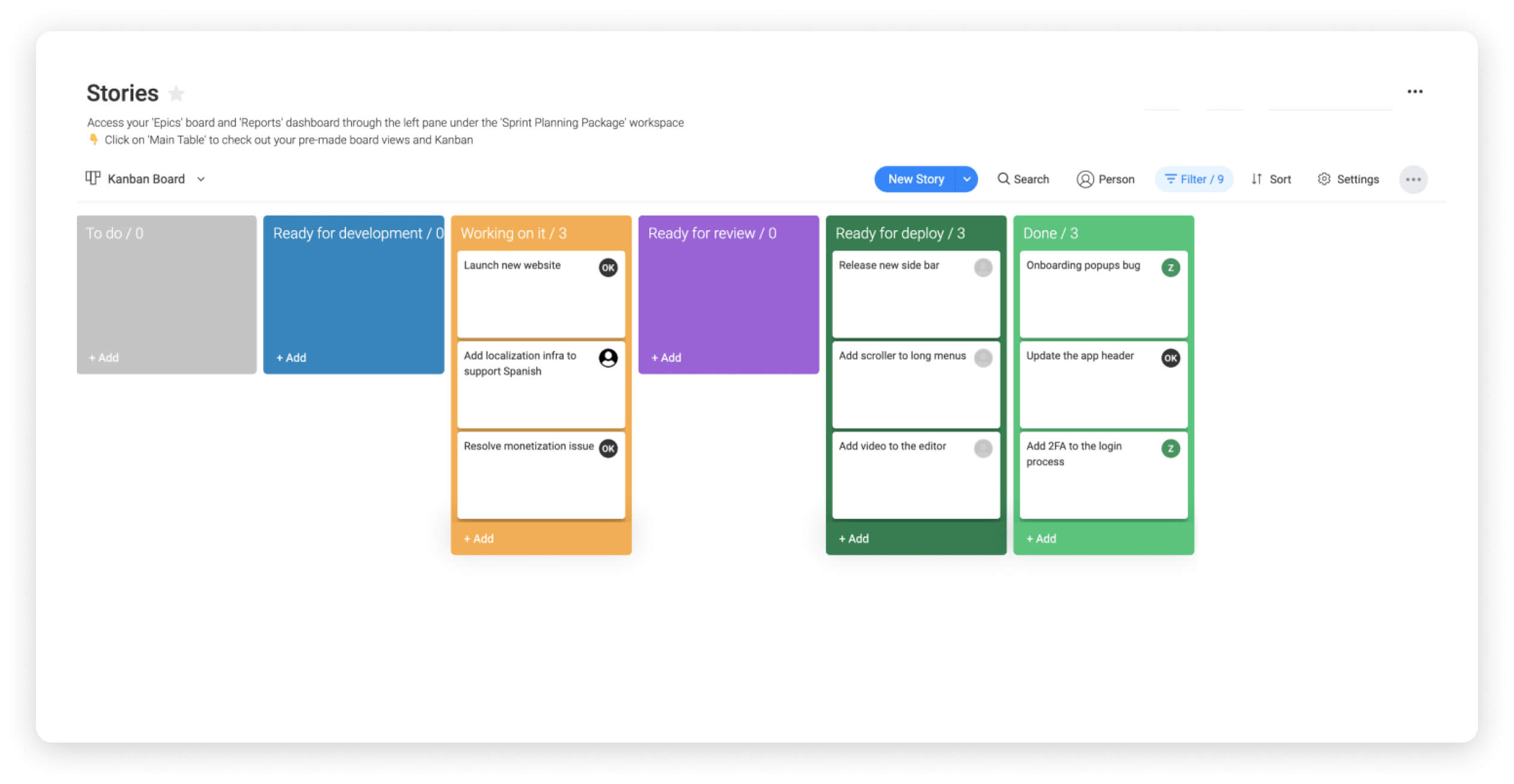
A user story template provides you with an outline of everything your user stories should contain. It gives you a clear idea of what perspective the user story takes, which can inform your Agile software development strategy.
User stories have four key components that influence common templates:
- Title: A short and descriptive name for the story or feature
- User: The role of the person who will benefit from the feature
- Action: What the user wants to achieve
- Benefit: How the user will receive value from the feature
Given this, a common user story template would look something like this:
As a [type of user], I want [an action] so that [a benefit/value].
For example, using the user story template above, a company that builds software for flight information, a completed user story might look something like this:
As a frequent traveler, I want to receive notifications about flight delays so that I can adjust my schedule accordingly.
Agile/Scrum user stories serve as a reminder to keep the user in mind during software development.
With templates, it becomes a lot quicker for teams to build meaningful user stories to guide their development projects.
Let’s go through a few other reasons you’d want to use a template.
The benefits of working with user story templates
There are countless benefits to using user story templates. Though user stories seem short and straightforward to build, they often have a lot of thought behind them. This makes creating them more complex than they appear because you need to be sure you’re concise, clear, and accurate. Here are some of the key benefits of using user story templates:
- Standardization: Standardizing your user stories ensures they all follow a consistent format, making it easier for team members to work with them and maintain a clear product backlog
- Efficiency: Templates with a predefined structure speed up the user story creation process, making it easier to compare and prioritize them in meetings
- Improved collaboration: With templates, your team has a shared understanding of what each story entails, facilitating more productive discussions in sprint planning meetings and reviews
- Consistent quality: With a user story template for Word, Excel, or just in general, you have an easy-to-replicate formula for success
- Smoother workflows: User stories are the building blocks of the Agile framework, so automating workflows using templates saves time and slashes the probability of bottlenecks that hinder productivity
- Ongoing momentum: With each completed user story, the team can boost their morale and momentum, which is key for seeing a project through to completion
- Better estimation: Templates often include some sort of acceptance criteria for solidifying a user story, which helps in accurate planning and timing estimations
How to write a user story?
We saw an example of a user story template above, but how do teams get to these sorts of conclusions? It can be more challenging than you’d expect to narrow down long explanations of features into a clear user story that fits one or two sentences. To do this, it’s important to work backward and define a few other factors and key metrics before building your story. Below, we’ll cover a few steps you should take to build your own user story.
Step 1: Define the end user
If you haven’t yet, start by creating a user or buyer persona to really get to the bottom of who your user is. You should consider aspects like their job, skills, pain points and challenges, behaviors, specific attributes, and their needs. This will help you better understand the decisions they’d make about your product.
Step 2: Look at what the end user wants
This is starting to get at the core of your user story. Based on what you know about your users, try to examine what they want based on how they currently use your product and build a path that leads to the feature solving this “want.” To do this, look at market research, surveys, feedback, focus groups, or even reported issues to determine specifics on what they want from your product.
Step 3: Define why a user wants what they want
Once you know your users and landed on what they want, it’s time to dig a little deeper and suss out why they want what they want. Look at how solving this user’s “want” will help them achieve their goals or get more value out of your product. To accomplish this, you should focus on what your product or a new feature would do for a user.
Step 4: Outline your acceptance criteria
To know when a user story is complete, you need to outline what conditions are met for it to be considered done. This can be if a new feature helps give a user what they want to allow them to meet their goals. When crafting your acceptance criteria, it’s essential to always keep the user’s perspective in mind over your own. In other words, whether the user story is completed or not should be answered from the perspective of your user.
6 user story template best practices
If you want to maximize the effectiveness of your user story templates by making them focused and easy to read, there are a few tips to keep note of.
- Create scannable content: Strive to make each user story concise and scannable, it should communicate the end user’s perspective as succinctly as possible and avoid misunderstandings.
- Focus on the why: Once you understand the ‘why’ of your ideal buyer persona, you can more deeply understand their perspective and create a better product for them based on the user’s goals.
- Avoid jargon: When you clutter up your user stories with too many technical terms, you reduce the speed of comprehension making it hard to follow.
- Include acceptance criteria: Always incorporate clear, testable acceptance criteria to define the boundaries of the story and set clear conditions for when it’s considered complete.
- Define business value: Consider adding a section to articulate the business value of a user story to help others prioritize stories based on business impact
- Facilitate collaboration: When building user story templates, design them to encourage discussion so that everyone has a shared understanding of it
4 user story template examples
There are different ways to tell a story, and the same is true of user stories. Depending on your team’s work processes and preferences, you may want to add a little more information to your user stories to tie them together better or make them fit how you currently work on projects. Below, we cover four of the most common user story templates so you can get a better idea of which one would best fit your development team.
1. Simple user story templates
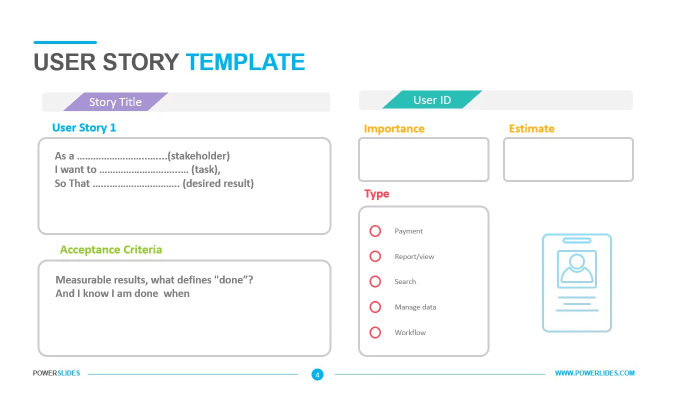
This template for user stories lets you examine one story at a time so you can focus on the user’s need in a clear and easy-to-read way. They’re straightforward and often only require additional information like priority or importance and an estimate of time or effort your need will need to put in.
2. Epic user story template
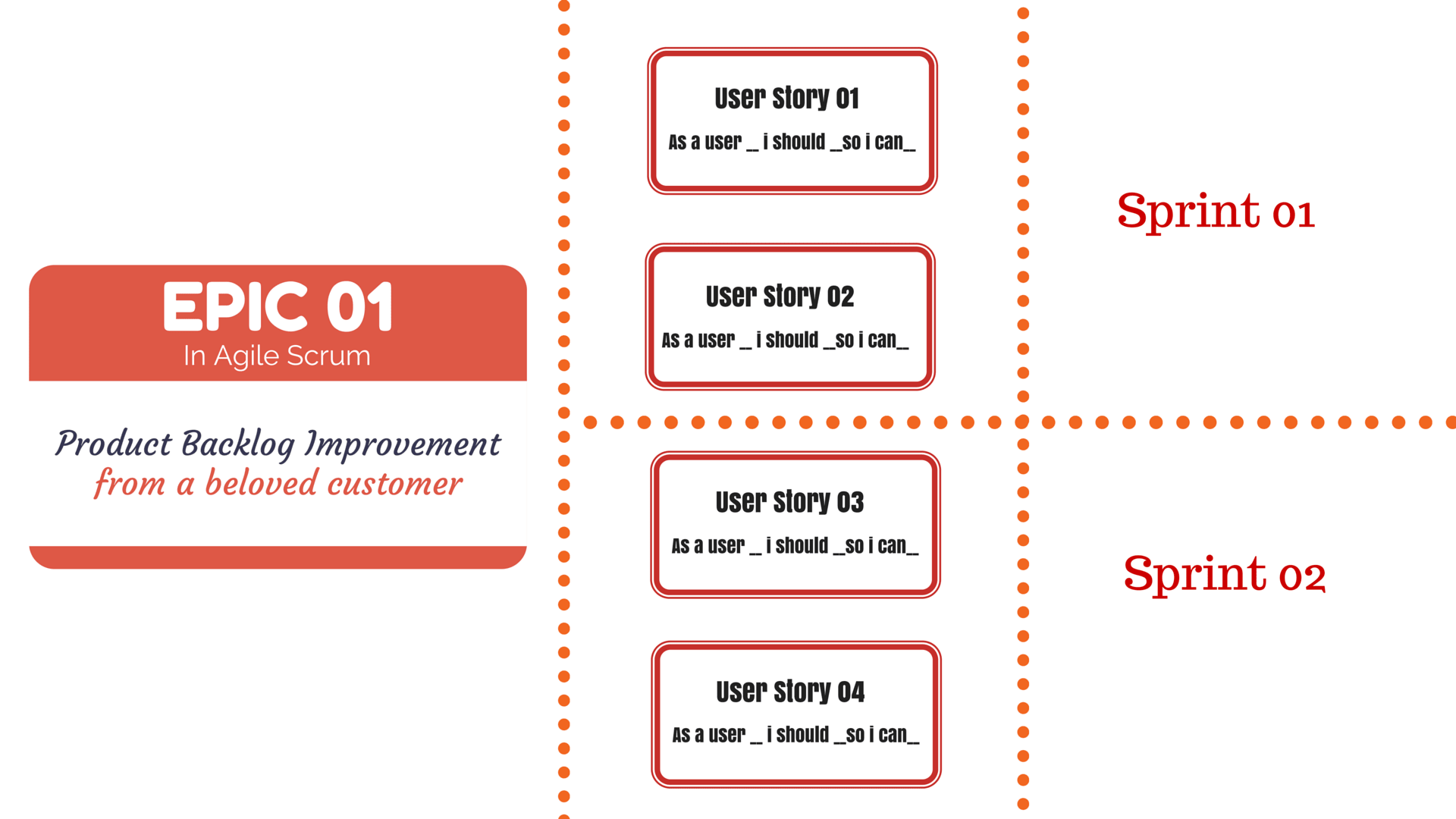
Agile teams often use epics to group related stories together into one larger one. Epics might follow the same user for different needs, represented by different stories so that teams can track each one as part of a larger story rather than individually.
3. Thematic user story template

Another user story format you can use is grouping them by theme. These go a step further than epics by considering your business’s goals and strategies as the jumping point of each user story. With a thematic user story template, you’re keeping your organization’s strategy at the forefront during the development process and closely aligning user stories to each theme.
4. SAFe® user story template
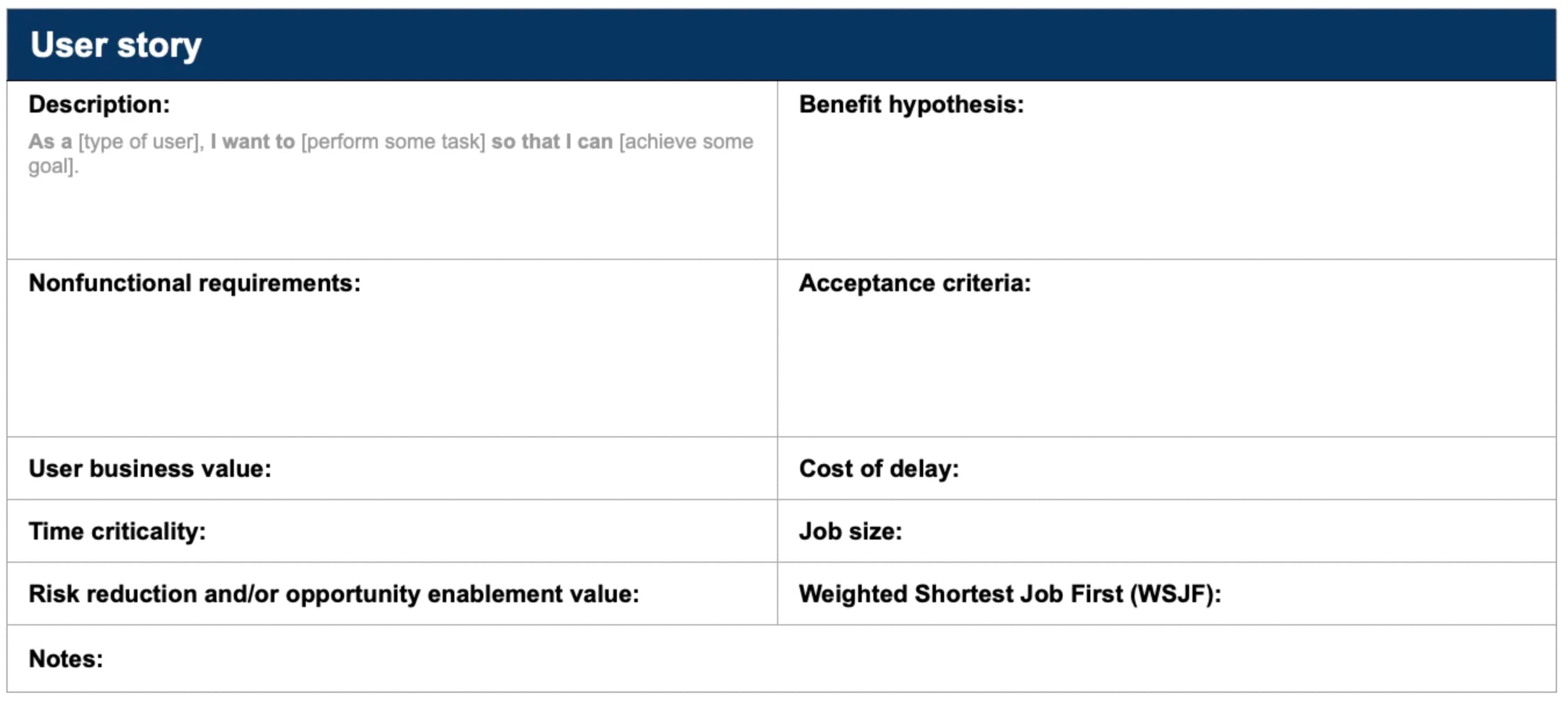
Organizations that use the SAFe Agile methodology might want to include additional data when creating user stories. These can be details like:
- Benefit hypothesis: Verifiable claims about a feature’s advantages
- User business value: How a task would impact business revenue and user satisfaction
- Nonfunctional requirements: System attributes that aren’t directly related to performance
- Time criticality: How necessary it is to complete a task quickly
- Cost of delay: The value lost due to a potential postponed release
- Risk reduction: The value associated with a task’s potential to decrease risk or create future opportunities
While there are downloadable user story templates that can be used for all of these examples in Excel or Word, using them on a development or project management platform will make your life a lot easier. monday dev has an Agile user story template that might be a better fit, let’s take a look.
Read an in-depth comparison of SaFe vs Scrum agile here.
Try monday devGet more done with the monday dev user story template
monday dev is a platform that allows developers and Agile teams to plan and execute projects from start to finish. As a work platform that makes collaboration and communication easier, using monday dev is the perfect way to collect all your team’s thoughts and focus them on building the strongest user stories.
The Agile Project Management template in monday dev is packed with tools and boards to help you organize and create user stories, epics, reports, and more. The template provides a framework for defining who the end-user is, what they might want from a feature, and why it would be useful to them.
Let’s take a closer look at some of the features in monday dev that would complement user story creation:
Agile workflows and templates
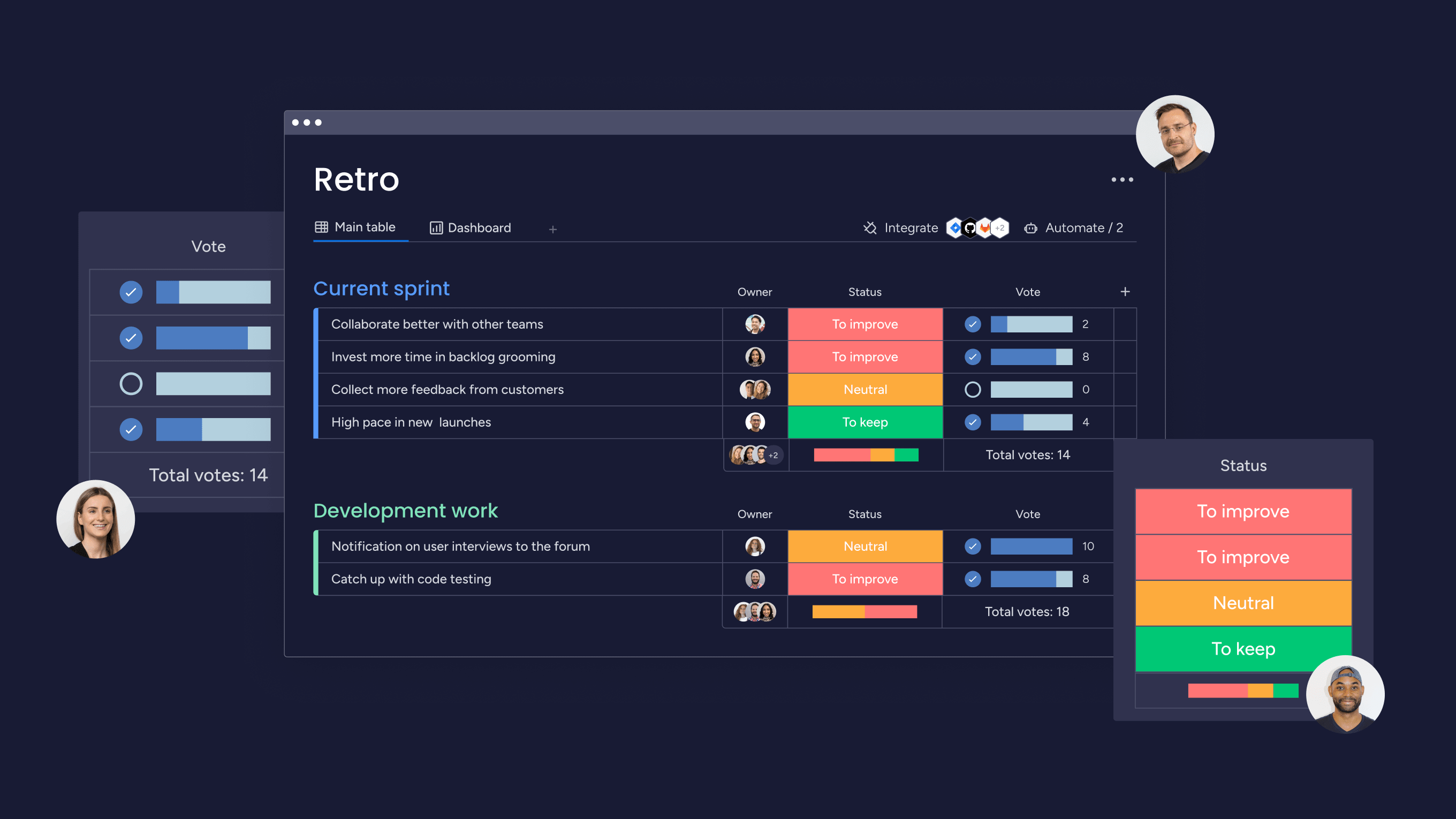
In addition to creating user stories, with monday dev, you can complete other Agile workflows using templates that make it quicker to start and organize tasks and stay on top of your to-do list with each user story. Build a product roadmap, organize items in a feature backlog board, plan sprints, and organize items with a sprint retrospective template.
Try monday devCustomize user stories with extra statuses and information
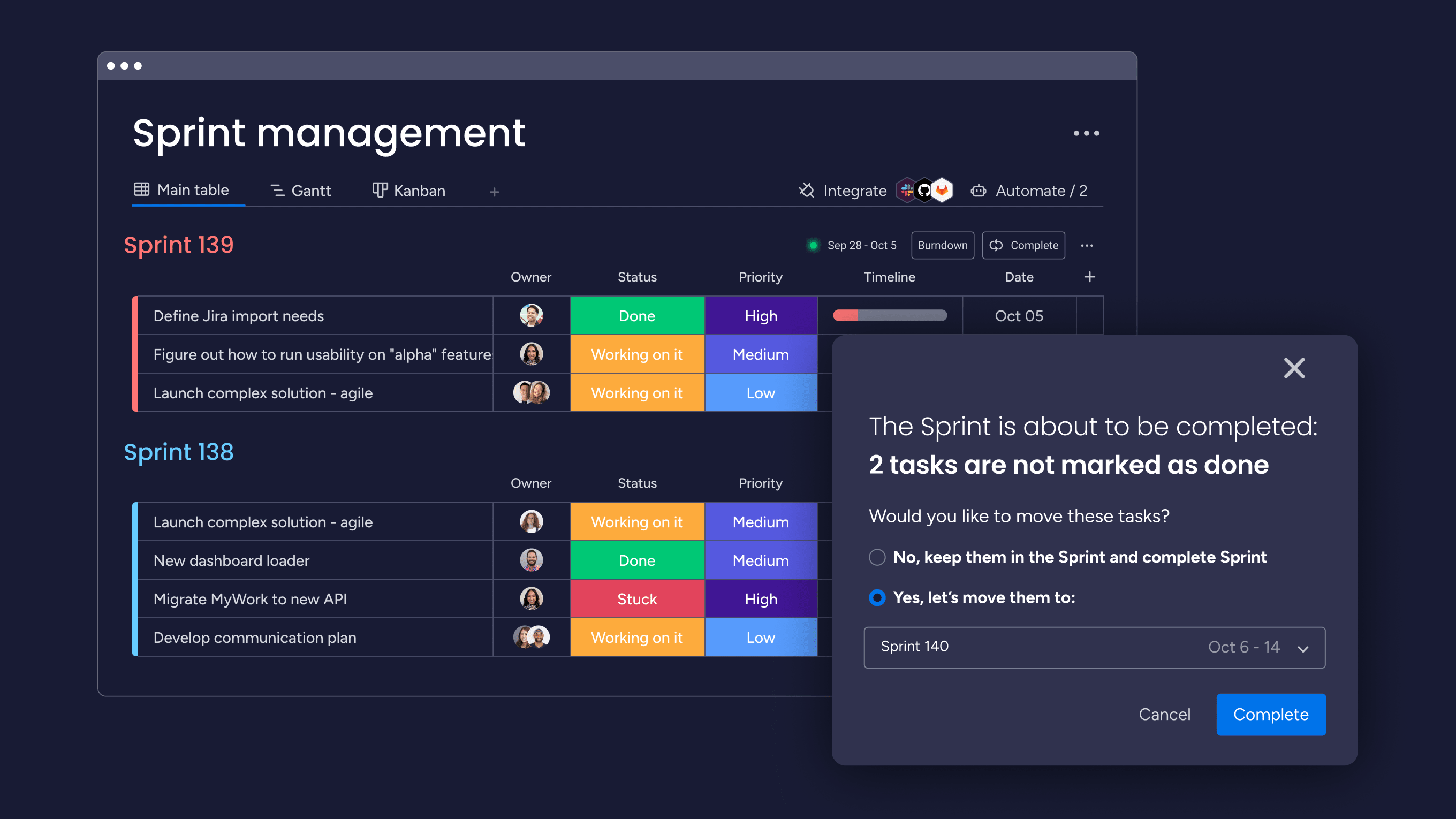
On your monday dev boards, you can further customize user stories to add additional information, like assigning it to a team member for review, adding supporting documents, comments for collaboration, timelines, deadlines, and more. This allows you to keep your user story itself simple while keeping all the related details organized in one place.
Multiple work views
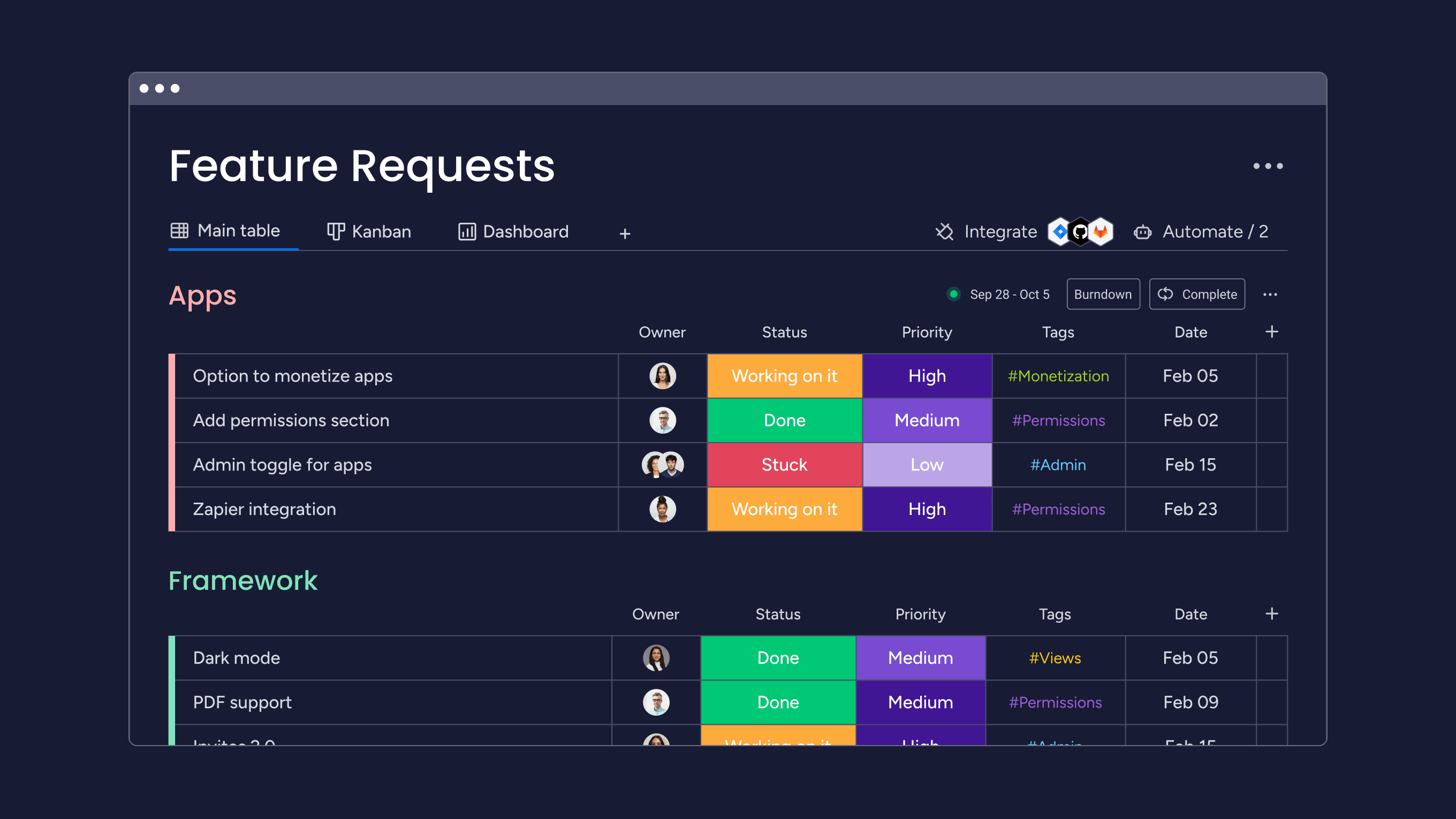
With over 27 different work views, you and your team can visualize tasks and projects the way they want. For example, the Kanban Board view is tailor-made for workflows like user stories, as it visualizes the process of completing small tasks. Timeline View can help you visualize progress, so you can see how far out you are from taking your product to market.
Better development workflows with a user story template
Having a template simplifies workflows by making them quicker to access, standardized, and easy to understand by all team members. With a user story template in a platform like monday dev, you can keep multiple user stories accessible for collaboration while connecting them to other important workflows like sprint planning and your product backlog. This way, your user stories or epics are always centered in context with your tasks, keeping them aligned with your overall project and goals.
FAQs
How do you structure a user story?
To structure a user story well, clarity must be your guiding compass. Clear language makes user stories easy to digest, which is key for completing the task. Structurally, it’s often represented as a simple sentence, such as “As a [type of user], I want [an action] so that [a benefit/value].”
What are the 3 Cs in user stories?
The three Cs in user stories are Card, Conversation, and Confirmation. Card refers to the individual user story task, conversation is about the discussions that take place among team members, and confirmation refers to the acceptance of criteria and what it takes to complete the user story in a satisfactory manner.
How does including business value in a user story template help in Agile development?
Including business value helps prioritize user stories based on their impact on the business, ensuring that the most valuable features are developed first. It also helps align development efforts with business goals.
- Tags:
- Agile methodology
 Try monday dev
Try monday dev 
